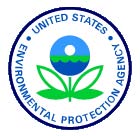Harmful Algal Blooms (HABs)
Cyanotoxins from harmful algal blooms (HABs) are occurring with increasing frequency in drinking water sources and negatively impacting drinking water treatment facilities throughout the US. These treatment facilities face a difficult task of not only removing the toxins but doing so in a safe and cost-effective way.
ASDWA 2023 HABs Webinar Series and Meeting
ASDWA is conducting a series of three Harmful Algal Blooms (HABs) webinars for state drinking water programs and partners. ASDWA is gathering input from these webinars to plan a meeting with federal programs and partners to discuss continuing state drinking water program needs for monitoring and predicting HABs and lab capacity in Fall 2023.
| Format | Date | HABs Title and Topic – Webinar Recording Link | Presenters |
| Webinar #1 | May 11, 2023 | AWOP and State Drinking Water Monitoring and Panning Efforts | · Deirdre White, ASDWA
· Tom Waters, EPA TSC · Courtney Davis, NY · Rob Newby, NJ · Steve Deem, WA |
| Webinar #2 | July 24, 2023 | Coordination Across State Programs | · Raven Jarvis, VA
· David Dani, CO · Jill Anderson, PA |
| Webinar #3 | September 19, 2023 | CyAN Potential Satellite Monitoring of Drinking Water Sources | · Blake Schaeffer, EPA
· Bridget Seegers, NASA · Megan Coffer, NOAA · Julie Harvey & Daniel Sobota, Oregon DEQ |
| Meeting | November 2023 by invite only | State and Federal Programs and Partners | Please contact Deirdre White at dwhite@asdwa.org for more information and to attend. |
State Harmful Algal Blooms (HABs) Rules
- Ohio Rules for HABs Monitoring and Reporting
- Oregon Rules for Cyanotoxin Monitoring in Drinking Water
- Rhode Island Drinking Water Algal Toxin MCLs for Microcystins, Cylindrospermopsin, Anatoxin-a, and Saxitoxin
State HABs Guidance and Resources
- Ohio’s HABs Monitoring Mapping Tool
- Colorado Monitoring Guidance
- Vermont Monitoring and Management Guidance
- Iowa Microcystin Study 2016-2017
- Kansas Voluntary Monitoring Program 2019
Web Resources and Reference Documents
- EPA Drinking Water Health Advisories for Microcystins and Cylindrospermopsin
- EPA HABs Incident Action Checklist– October 2017 – The checklist includes three “rip and run” sections with examples of activities for surface water utilities.
- EPA Recommendations for Public Water Systems to Manage Cyanotoxins in Drinking Water – June 2015: This document includes the new health advisory levels for Microcystin and Cylindrospermopsin, information about analytical methods and treatment protocols, and an overview of the five-step preliminary approach for determining whether Cyanotoxins are present in drinking water and, if so, what subsequent actions to take.
- EPA’s Web Site on Managing Cyanotoxins in Public Drinking Water Systems: EPA’s website shares information and resources on this topic with navigation quick tabs to learn more about: what causes cyanobacterial toxins; how to prevent, detect, mitigate and treat for them; the health and ecological effects of cyanotoxins; current research activities in the U.S.; and policies and regulations for cyanotoxins at the state and international levels.
- A Water Utility Managers Guide for Cyanotoxins (AWWA and WaterRF) – April 2015: This guide addresses cyanotoxin occurrence, source water management, and treatment strategies.
- CDC Harmful Algal Bloom web site
- USGS Cyanobacteria and HABs – The USGS Cooperative Water Program has a number of publications available on this web page from various studies conducted throughout the U.S.
- Current Canada Drinking Water Quality Guideline for microcystin-LR:(This is a current guideline, please ignore the notice that says that this is archived content, this is a mistake from recent changes to website architecture).
- Current approaches to Cyanotoxin risk assessment, risk management and regulations in different countries (2012): This paper was presented at the 8th International Conference on Toxic Cyanobacteria.





